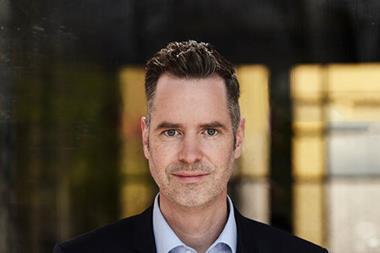The Finnish asset management industry is currently experiencing a radical change. In the past few years several foreign firms, such as Danske Capital, have strengthened their position in the country. At the same time, other traditional Nordic players, such as Alfred Berg, have disappeared from the scene as they have been acquired by international asset management firms. Some firms, such as Carnegie, have also experienced notable turbulence in their management structure.
A number of new firms have also appeared on the scene. One of these is, for example, Taaleritehdas, a new Finnish bank and asset management company established in 2007. A challenging, low-yield investment environment and the new investment regulations for local pension funds are also having an impact on the industry. Many players point out that the local asset management industry is bound to emerge from the current era of changes looking quite different than today.
In August 2007, the investments of Finnish pension institutions totalled €123bn. According to the Finnish Pension Alliance (TELA), the average portfolio of a Finnish pension fund is made of equities (48.1%), bonds (36%), property (8.7%) money market investments (4.5%) and loans (2.7%). Over the first half of 2007 Finnish pension funds pulled in a return of 5.2%, a visible improvement to the 1.1% that investments yielded over the same period in 2006.
Ari Korhonen, head of asset management at Kaupthing Asset Management in Finland, says that in the rapidly changing environment many Finnish asset management companies are feeling pressure to become more specialised and improve their service levels. At present Kaupthing manages assets totalling €18.5bn. Institutional and pension related assets represent a sizeable part of this sum. Korhonen joined Kaupthing last summer from Etera Mutual Pension Insurance company, where he worked for eight years, most recently as the fund's chief investment officer.
"The emergence of new competition in terms of different alliances, mergers and even some quite recently established new companies are all changing the local asset management landscape rapidly. In many cases industry players have to redefine their roles to be able to compete. This may mean specialisation in one area or making more effort in communicating to clients. The situation at present is very challenging for many," Korhonen says.
Esko Haavisto, senior strategist at Nordea Investment Management, also notes that the pressure to generate competitive returns is intensifying. Nordea Investment Management manages assets totalling €105bn, one tenth of which is pension fund mandates. In Finland the firm manages assets totalling more than €25bn. "I also expect to see an increase in the demand for expert services that combine knowledge of asset management and quantitative tools tailored for the current regulatory set-up," Haavisto adds.
Jussi Louekoski, general manager for Nordic countries at Crédit Agricole Asset Management (CAAM), notes that the largest pension funds in Finland have grown so strongly that they today manage more assets than some local service providers. CAAM currently manages €2.3bn for Nordic clients; most assets it manages in Finland belong to pension funds. "We have been observing an impressive development in the industry over the last few years. Larger pension funds are managing more money in-house than local service providers - and in a highly professional manner," he says. "We expect the differentiation between in-house management and external management to continue and the professional buying of investment services to become even more sophisticated," Louekoski adds.
Industry players point out that the main challenge pension fund asset managers face at present is solvency regulations and the way the required return for pension funds is determined. At present a pension fund's solvency requirement is dependent on the structure of the fund's portfolio, that is, its volatility and the correlation between different asset classes. The more solvency capital the pension fund has, the more freedom it has in constructing the asset class structure of its portfolio.
The system effectively means that the required rate of return in the Finnish pension system is determined by the average solvency of all pension funds in the system. From this year on a fraction of the average equity return of pension funds in the system will also be included as an additional element in the required rate. This on its part will make the return requirement of a pension fund a dependent on the investment behaviour of the other funds.
"Currently the required rate of return on funded pension assets in the statutory earnings-related pension system is approximately 6%. The long-term average required rate is estimated to be slightly above this. The key issue is how to construct portfolios and products that could exceed, or at least meet this return requirement as well as possible, regardless of the market conditions," Haavisto says.
According to Haavisto, taking too little risk in the short-term in the current set up is a notable risk in the long-term. "Having a noticably smaller equity exposure than the average pension fund is a cause of concern. In periods of high equity returns this can lead to falling behind the average development of solvency. This, on its part, can lead to a vicious circle, in which the pension fund is unable to take enough risk to generate returns that would meet the average return requirement determined by solvency and equity returns of an average pension fund," Haavisto explains.
Louekoski agrees that the minimum capital requirement and solvency calculation are the main concerns of the Finnish asset management industry today. "In fact, we would welcome a clear move towards assessing portfolio risks and operating capital requirements at the aggregate portfolio level rather than classifying single investment vehicles, for example mutual funds, based on strictly defined characteristics," he says.
Korhonen notes that the new legislative framework and the return requirement are "crucial and something no one can ignore". According to him, the existing regulatory framework consists of both push and pull elements.
"If return on assets is not sufficient, the fund must cover the deficit from its existing risk buffer, and this will limit its future options. On the other hand, any concentrated holding will be seen as a drag in terms of solvency, limiting, for example, the desire of a fund to look for a hideout in sovereigns should times become turbulent."
Korhonen adds that client demands for certain rate of return and the way solvency is currently calculated are both pushing investment service providers to adopt more traditional ways of communicating. "This means emphasising the role of return to clients, which creates new pressures in the daily operations on both sides of the desk."
Haavisto points out that the current regulatory need in the industry is streamlining of regulations and increased transparency in solvency. "Regulations on pension funds operating in the Finnish statutory earnings related pension system are very complex and mastered only by a small group by dedicated experts. I would like to see streamlining of the regulations and increased transparency in setting the assumptions on which solvency regulations are based," Haavisto says.
"The publicly available Assumption Paper prepared by the Central Bank of Norway to serve as the basis of strategic asset allocation at the Government Pension Fund of Norway sets a good example of the kind of transparency I would welcome in Finland," he adds.












No comments yet